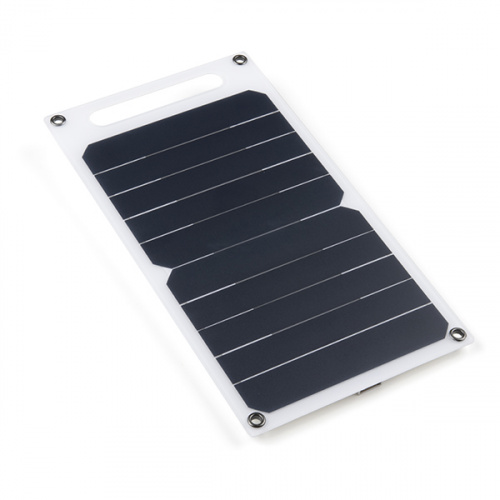Hardware Assembly
USB Programming🔗
The USB connection is utilized for programming and serial communication. Users only need to plug their ESP32-WROOM Thing Plus into a computer using a USB-C cable.
The ESP32-WROOM Thing Plus with USB-C cable attached.
Battery🔗
For remote IoT applications, a Li-Po battery can be connected. Additionally, users may be interested in utilizing a solar panel and USB-C cable to recharge their battery.

The ESP32-WROOM Thing Plus with a battery connected. (Click to enlarge) |

Solar Panel Charger - 10WTOL-16835 |

USB 3.1 Cable A to C - 3 FootTOL-14743 |
Warning
DO NOT remove batteries by pulling on their wires. Instead, it is recommended that pair of dikes (i.e. diagonal wire cutters), pliers, or tweezers be used to pull on the JST connector housing, to avoid damaging the battery wiring.

Using a pair of dikes to disconnect a battery. (Click to enlarge)
Headers🔗
The pins for the ESP32-WROOM Thing Plus are broken out to 0.1"-spaced pins on the outer edges of the board. When selecting headers, be sure you are aware of the functionality you need. If you have never soldered before or need a quick refresher, check out our How to Solder: Through-Hole Soldering guide.
Soldering headers to the ESP32-WROOM Thing Plus.
The Feather Stackable Header Kit is a great option as it allows users to stack shields (w/ Feather footprint) or it can be placed on a breadboard; while the pins are still accessible from the female/male headers.
µSD Card Slot🔗
The ESP32-WROOM Thing Plus (USB-C) includes an µSD card slot on the back of the board. The cardholder functions through a push/pull operation. (The card slot doesn't include a spring retention mechanism; cards are held in place through friction.)
Users can slide-in or pull-out a µSD card from the cardholder.
Qwiic Devices🔗
The Qwiic system allows users to effortlessly prototype with a Qwiic compatible I2C device without soldering. Users can attach any Qwiic compatible sensor or board, with just a Qwiic cable. (*The example below, is for demonstration purposes and is not pertinent to the board functionality or this tutorial.)
The BME688 environmental and VL53L1X distance Qwiic sensor boards connected to the ESP32-WROOM Thing Plus.



